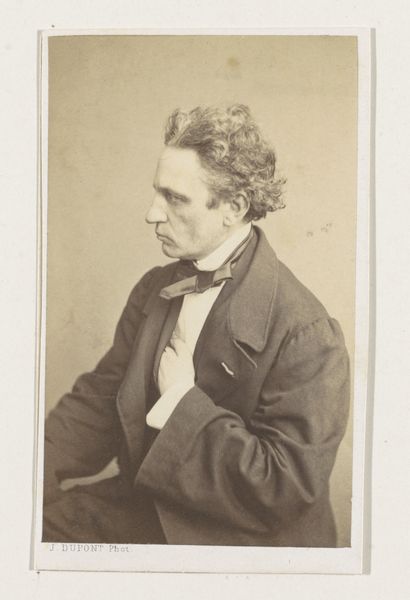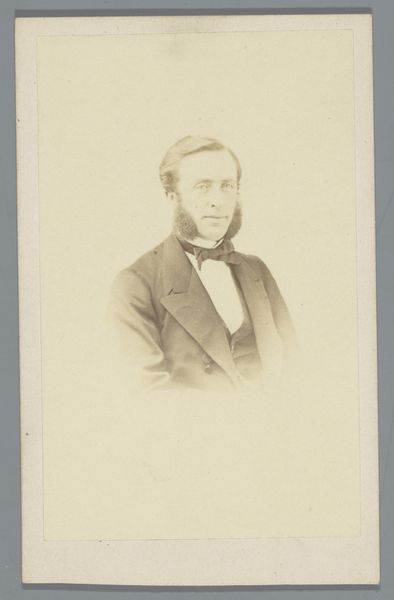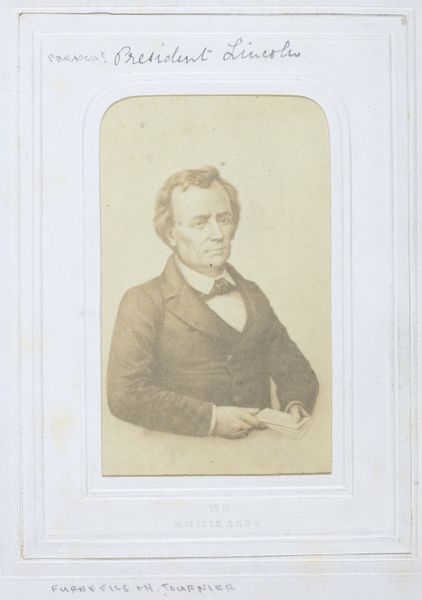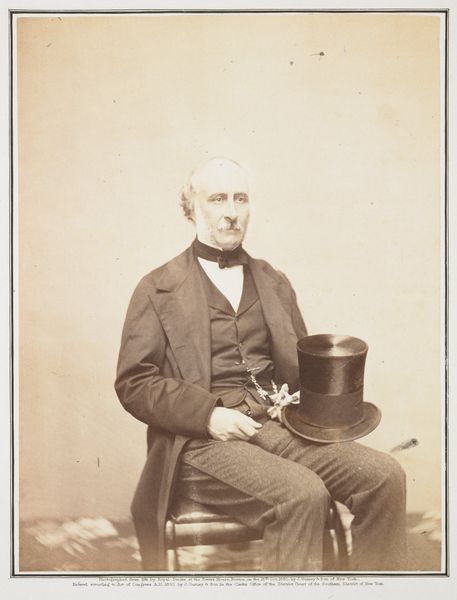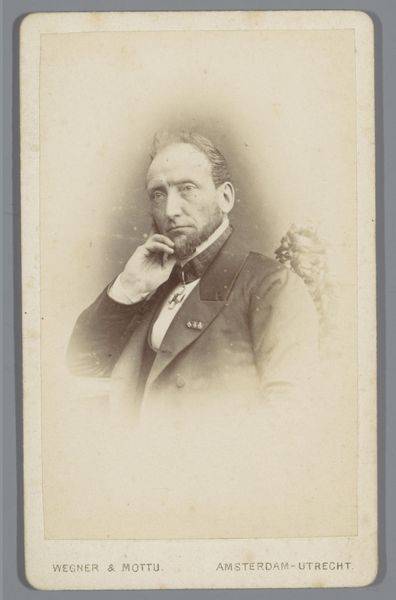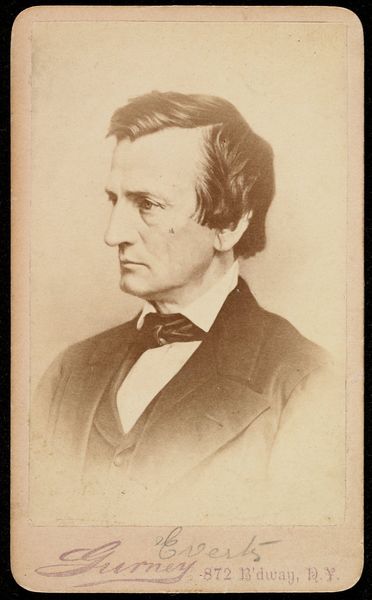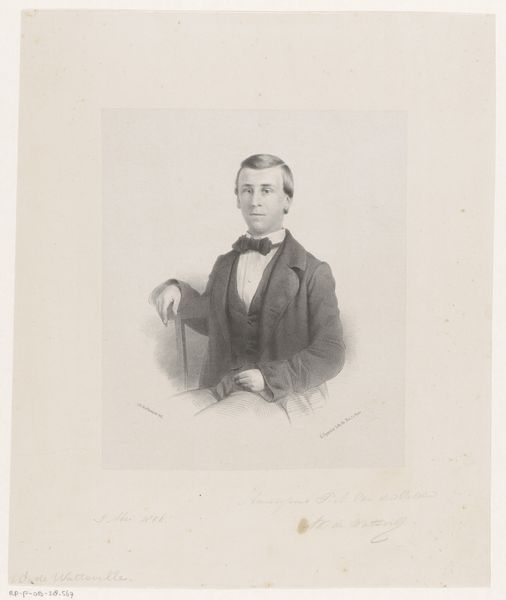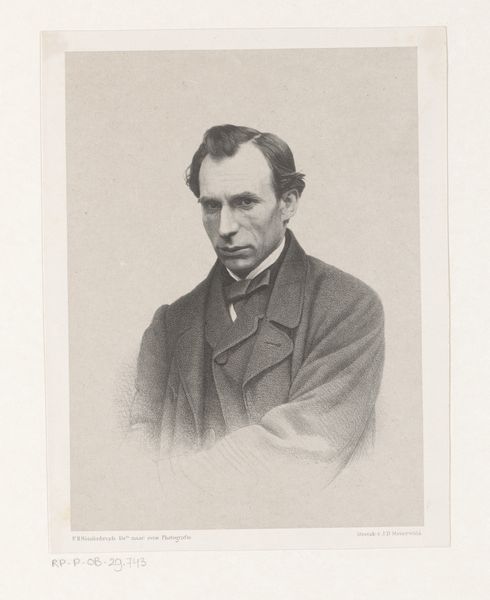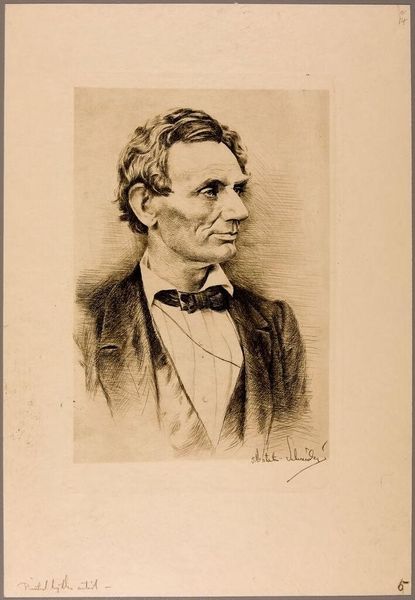
Dimensions: height 102 mm, width 61 mm
Copyright: Rijks Museum: Open Domain
Curator: What strikes me most immediately about this gelatin silver print is its stillness. A certain contemplative quality emanates from the sitter’s reserved expression and subdued palette. Editor: Indeed. This work by Joseph Dupont, dating back to 1861, is titled “Portret van de schilder Antoon van Ysendyck, halffiguur," meaning a portrait of the painter Antoon van Ysendyck, half-length. Knowing that it depicts a painter offers an interesting layer. Observe how Dupont utilizes the limited tonal range inherent to the medium to draw our eye toward the meticulously rendered contours of Van Ysendyck’s face and hands. Curator: I agree. The contrast creates an interesting interplay between light and shadow, which adds a soft sculptural dimension to Van Ysendyck’s face, especially highlighting the details of his brow and nose. How might this photograph, especially being made in the 1860s, have influenced Van Ysendyck's own artistic practice or the wider artistic community? The sitter's slightly melancholic gaze conveys a certain internal gravity—quite characteristic of the romantic period I'd say. Editor: As an art historian, I’d suggest this image functions as a document of its time, embodying the Romantic ideals prevalent then. These portraits allowed for a democratization of image, and yet they could also propagate particular ideas about class or status, like Van Ysendyck’s place in Belgian society. The deliberate, almost theatrical pose with his hand placed upon his chest could convey artistic sensibility, perhaps a performative declaration of artistic integrity. Curator: It’s also intriguing to observe Dupont's choice of employing a half-figure composition, which I believe successfully directs attention toward Van Ysendyck's face, a visual focus point, rather than his clothing or setting. What semiotic interpretation would you give to this compositional choice? Editor: By isolating the sitter and reducing distractions, Dupont is drawing attention to the individual and elevating the artistic class, suggesting it should be considered through psychological intensity and personal genius. Curator: Thinking purely about the form itself, one can appreciate how skillfully Dupont composed the artwork using these photographic elements to highlight texture and character, inviting an engaging exploration of this 19th-century artist’s countenance. Editor: Exactly, and considering its historical implications allows us to better see this image as an assertion of cultural identity.
Comments
No comments
Be the first to comment and join the conversation on the ultimate creative platform.


